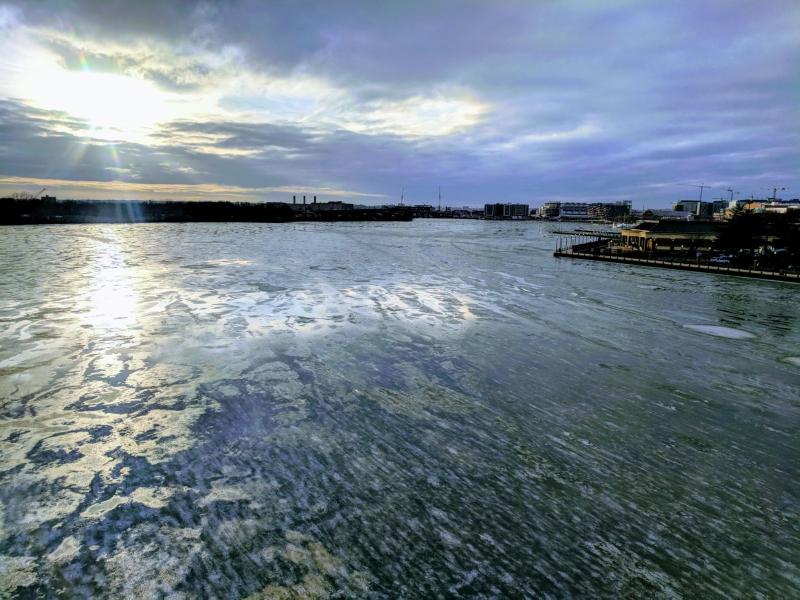Anacostia River Sediment Project Update & Overview
Visit the Anacostia River Sediment Project website to learn more about the project, read the latest project documents, and sign up for updates.
Anacostia River Sediment Project Overview
The Anacostia River and the land area that drains to the river have a long history of urbanization, industrialization, and agriculture, which has resulted in pollution, poor water quality, and contaminated sediments in the river bed. The District Department of Energy and Environment (DOEE)’s Anacostia River Sediment Project was initiated to identify any potential sediment contamination in the nine-mile tidal portion of the Anacostia River, Washington Channel and Kingman Lake.

Since 2013 the Anacostia River Sediment Project has proceeded through a succession of phases. The initial phases determined the nature and extent of the sediment contamination (Remedial Investigation) and the risk posed to humans and wildlife (Risk Assessment). These studies concluded that elevated concentrations of contaminants, including polychlorinated biphenyls (PCBs), polycyclic aromatic hydrocarbons (PAHs), dioxins, heavy metals, and pesticides from industrial, urban, and human activities are present in sediment throughout the Anacostia River, posing a potential risk to humans or aquatic wildlife.
Next the Anacostia River Sediment Project identified potential solutions to the risks posed by contaminated sediments (Feasibility Study). After input was gathered from broad array of stakeholders on the available options for remediation (Proposed Plan), DOEE issued an Interim Record of Decision that identifies the early action cleanup remedies for the most contaminated areas in the river and outlines the process for their implementation.
Interim Record of Decision
On September 30, 2020, the Anacostia River Sediment Project released an Interim Record of Decision (ROD) outlining the findings of existing Anacostia River contamination and early actions that the District will be taking to cleanup the contamination.
The Interim ROD focuses on remediating PCB-contaminated sediments. In most of the river, higher levels of contaminants are found in its deeper sediments, suggesting river pollution came from historic industrial activities that occurred decades ago. In some regions of the river, higher levels of contaminants are found close to the surface of the river bottom suggesting recent and/or on-going activities have led to contamination. In both scenarios, removing or containing the most contaminated sediment can substantially reduce risk to human health and wildlife.
The Interim ROD establishes specific numerical cleanup goals and identifies 11 Early Action Area “hot spots” in the Anacostia River, Washington Channel, and Kingman Lake where PCB contamination is highest. Overall, an area of approximately 77 acres will be cleaned up at an estimated cost of $35.5 million, reducing the human health risk from PCBs.
- Interim ROD Fact Sheet (also attached below - en Español)
If you have any questions regarding the Anacostia River Sediment Project Interim ROD, please contact Dev Murali, Remedial Project Manager at [email protected].
Community Involvement Plan
For the public, stakeholders, and parties potentially responsible for pollution, DOEE has also prepared a Community Involvement Plan (CIP) for the Anacostia River Sediment Project that serves as a planning tool to promote an open dialogue throughout the Department’s investigation and during any remedial cleanup. DOEE is fully committed to involving the public in every phase of the investigation and cleanup efforts in a substantial and significant manner to meet established goals.
If you have any questions regarding community involvement for the Anacostia River Sediment Project, please contact Gretchen Mikeska, Anacostia Coordinator at [email protected].
Administrative Record File
The administrative record file provides public access to Anacostia River Sediment Project documents. This includes records that the Department uses or considers for the project as well as documents that demonstrate the public’s participation in the project.
To utilize the administrative record file, please open the index file within the link below, which provides a list of all documents and their respective locations within folders and subfolders.

